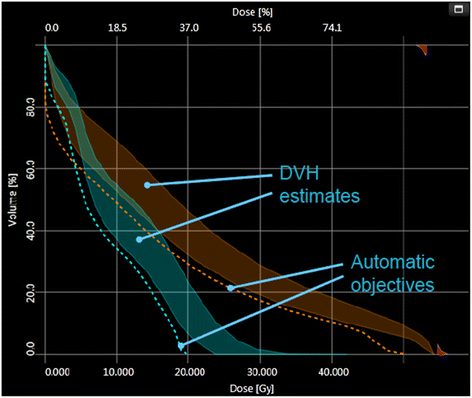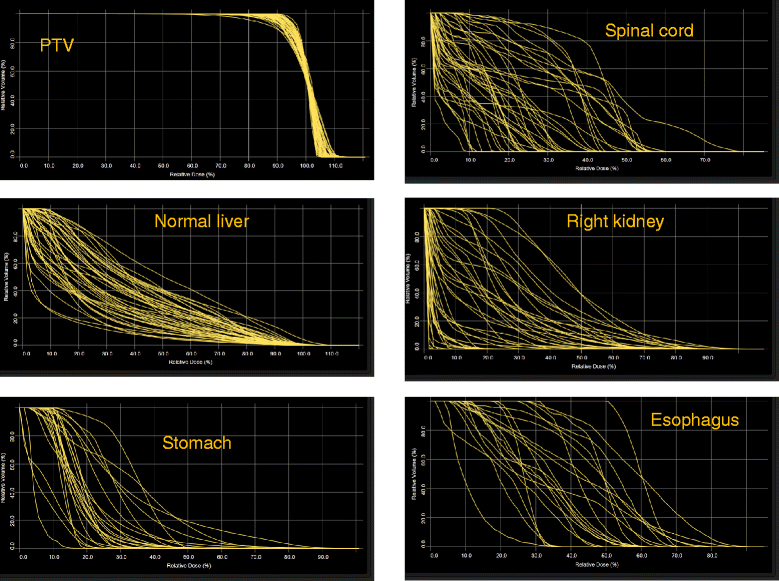Assessment of a model based optimization engine for volumetric modulated arc therapy for patients with advanced hepatocellular cancer
- PMID: 25348465
- PMCID: PMC4219039
- DOI: 10.1186/s13014-014-0236-0
Assessment of a model based optimization engine for volumetric modulated arc therapy for patients with advanced hepatocellular cancer
Abstract
Background: To evaluate in-silico the performance of a model-based optimization process for volumetric modulated arc therapy (RapidArc) applied to hepatocellular cancer treatments.
Patients and methods: 45 clinically accepted RA plans were selected to train a knowledge-based engine for the prediction of individualized dose-volume constraints. The model was validated on the same plans used for training (closed-loop) and on a set of other 25 plans not used for the training (open-loop). Dose prescription, target size, localization in the liver and arc configuration were highly variable in both sets to appraise the power of generalization of the engine. Quantitative dose volume histogram analysis was performed as well as a pass-fail analysis against a set of 8 clinical dose-volume objectives to appraise the quality of the new plans.
Results: Qualitative and quantitative equivalence was observed between the clinical and the test plans. The use of model-based optimization lead to a net improvement in the pass-rate of the clinical objectives compared to the plans originally optimized with standard methods (this pass-rate is the frequency of cases where the objectives are respected vs. the cases where constraints are not fulfilled). The increase in the pass-rate resulted of 2.0%, 0.9% and 0.5% in a closed-loop and two different open-loop validation experiments.
Conclusions: A knowledge-based engine for the optimization of RapidArc plans was tested and lead to clinically acceptable plans in the case of hepatocellular cancer radiotherapy. More studies are needed before a broad clinical use.
Figures







References
-
- Good D, Lo J, Lee R, Wu J, Yin FF, Das S. A knowledge based approach to improving and homogenizing intensity modulated radiation therapy planning quality among treatment centers: an example application to prostate cancer planning. Int J Radiat Oncol Biol Phys. 2013;87:176–181. doi: 10.1016/j.ijrobp.2013.03.015. - DOI - PubMed
MeSH terms
LinkOut - more resources
Full Text Sources
Other Literature Sources
Medical

